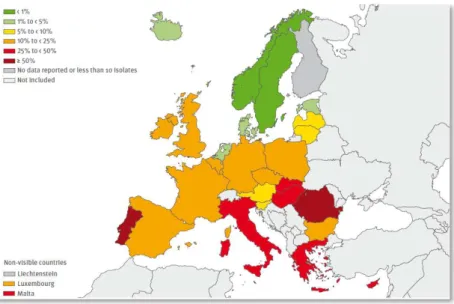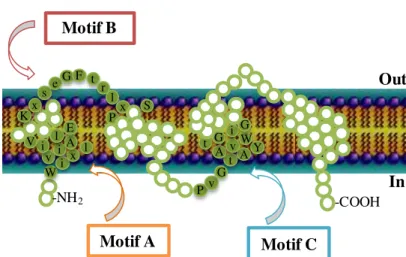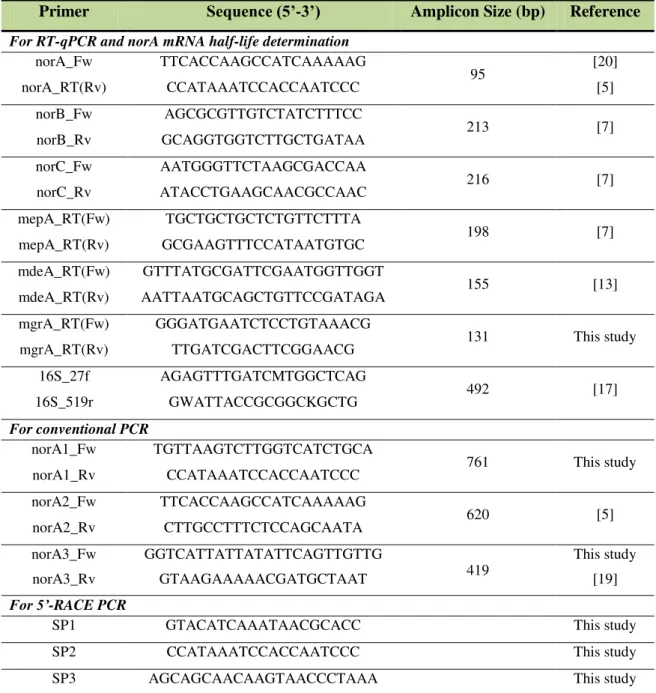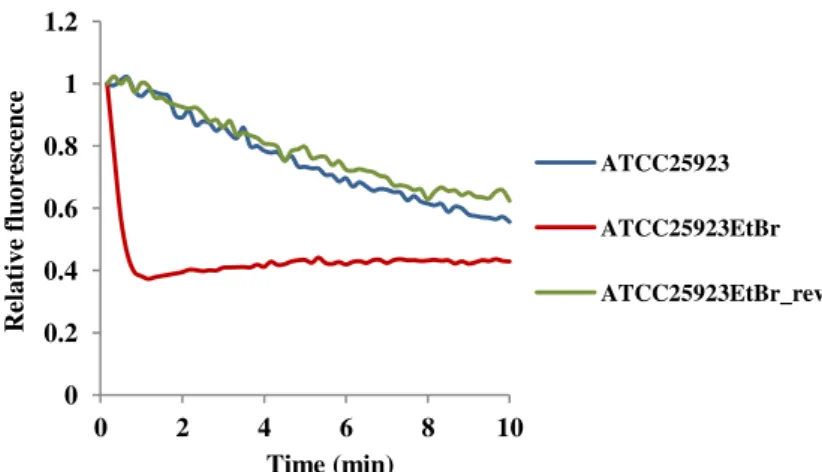Efflux pump activity in drug resistance of Staphylococcus aureus
Texto
Imagem




Documentos relacionados
albicans strains from animals were tested for their antifungal susceptibility, according to document M27- A3, efflux pump activity by rhodamine 6G test, ergosterol content
In overweight hypertensive patients on drug therapy, the decrease in blood pressure seems to rely on other mechanisms other than plasma renin activity, and is associated with
Exposure of MSSA and MRSA strains to fluoroquinolones and biocides promotes a multidrug efflux response The reference MSSA strain ATCC25923 and two clinical MRSA strains, SM2 and
tuberculosis clinical strains were characterized for drug resistance associated mutations and antibiotic profiles in the presence and absence of efflux inhibitors.. The
chapter, the contribution of efflux pump activity in macrolide resistance in MAC
spite showing mexB overexpression, the isolate Ps 185 was susceptible to carbapenems, which corroborates the belief that expression of efflux pumps in the absence of
Em protecção tradicional e, certamente, em protecção integrada, parece haver consenso teórico relativamente à recomendação proposta pela DGPC, em 2006, no Guia dos
que o parto não avance após o surgimento dos membros na vulva; ou sempre que a fêmea deixe de fazer esforço por um período de 15 a 20 minutos, após ter feito a última


![Figure 1.7. Representation of the structural model of a MATE transporter with 12 TMS. There are no conserved motifs identified to date for MATE transporters, but highly conserved sequences are represented by full circles [156]](https://thumb-eu.123doks.com/thumbv2/123dok_br/15770231.641211/46.892.163.765.228.445/representation-structural-transporter-conserved-identified-transporters-conserved-represented.webp)


